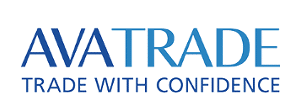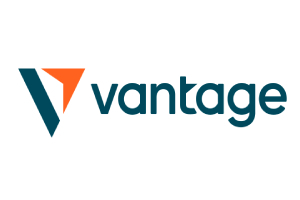Flatcoins represent a new type of cryptocurrency designed to maintain purchasing power rather than a fixed dollar value, addressing a major weakness in traditional stablecoins.
While traditional stablecoins tied to the US dollar gained popularity, they come with a major flaw: they lose buying power when inflation rises.
Enter flatcoins, a new type of cryptocurrency that aims to solve this problem by maintaining constant purchasing power over time rather than a fixed dollar value.
Unlike conventional stablecoins such as USDT or USDC that peg their value to fiat currencies, flatcoins track the actual cost of living. This means when the price of groceries, gas, and housing goes up, a flatcoin’s value adjusts to match that increase.
The goal is simple: one flatcoin should buy the same basket of goods today as it will in five or ten years.
How Flatcoins Actually Work
The mechanics behind flatcoins are more complex than traditional stablecoins. The first flatcoin, called Nuon, uses a sophisticated system that monitors inflation through an oracle network named Truflation.
This network tracks prices across millions of real-world goods to calculate how much the cost of living changes day by day.
When inflation data comes in, the flatcoin protocol automatically adjusts the coin supply.
If the cost of living rises by 3%, the system creates new coins to increase the flatcoin’s value by the same amount. If deflation occurs, coins get removed from circulation to bring the value back down.
This supply adjustment happens through overcollateralization. Users must deposit more valuable assets like Bitcoin or Ethereum than the flatcoins they receive. This extra collateral acts as a safety buffer.
If the flatcoin’s value moves too far from its target, the system can mint new coins or buy back existing ones to restore balance.
The process requires active participation from users who provide collateral and help stabilize the system. This creates a more complex ecosystem compared to fiat-backed stablecoins that simply hold dollar reserves in bank accounts.
The Economic Logic Behind Purchasing Power Stability
Traditional stablecoins face a fundamental problem during inflationary periods. A coin worth $1 today might still be worth $1 tomorrow, but that dollar buys less stuff.
After the COVID-19 pandemic, when inflation hit multi-decade highs in many countries, this weakness became obvious. People holding USDC or USDT saw their real purchasing power decline even though the dollar value stayed the same.
Bitcoin and other cryptocurrencies didn’t provide a solution either. While Bitcoin has a limited supply that makes it theoretically deflationary, its extreme price swings make it unreliable for everyday transactions.
You might buy coffee with Bitcoin on Monday, but by Friday that same amount of Bitcoin could be worth twice as much or half as much.
Flatcoins attempt to thread this needle by offering stability in what actually matters: what your money can buy. Instead of maintaining a $1 peg, they maintain a “purchasing power peg” that adjusts with economic conditions.
Major Challenges and Technical Hurdles
Despite their theoretical appeal, flatcoins face several significant obstacles.
The biggest risk comes from their dependence on oracle networks that feed real-world data into the blockchain. If these oracles get hacked, manipulated, or simply malfunction, the entire flatcoin system could collapse.
Unlike a bank vault holding actual dollars, there’s no physical backup when digital systems fail.
The complexity of maintaining purchasing power stability also creates new attack vectors. Bad actors might try to manipulate the inflation data or exploit weaknesses in the supply adjustment algorithms.
The system needs constant monitoring and adjustment, making it more vulnerable than simple dollar-backed alternatives.
Adoption presents another major challenge. Flatcoins require users to actively participate by providing collateral and helping maintain stability.
This creates a chicken-and-egg problem: the system needs users to work properly, but users won’t join until they see it working reliably at scale.
Regulatory uncertainty adds another layer of risk. Current flatcoins operate in a legal gray area. If they gain significant adoption, regulators might impose strict requirements around reserves, collateralization ratios, or operational procedures.
These rules could fundamentally change how flatcoins work or even make them impossible to operate as designed.
Real-World Applications and Future Potential
The most compelling use case for flatcoins lies in countries experiencing high inflation or currency instability. Citizens in nations where local currencies lose value rapidly could use flatcoins to preserve their wealth without relying on foreign currencies like the US dollar.
Some experts have proposed even bolder applications. Brian Armstrong from Coinbase and Ethereum co-founder Vitalik Buterin have expressed interest in inflation-resistant cryptocurrencies, though Buterin warns about the complex algorithmic challenges involved.
(3/6) Ethereum cofounder Vitalik Buterin wants a flatcoin. pic.twitter.com/w3cClyOltf
— Nuon (@NuonFinance) October 18, 2022
The most ambitious vision involves national governments adopting flatcoin-style currencies. Instead of traditional money controlled by central banks, countries could issue digital currencies pegged to baskets of goods.
This would create inflation-resistant national currencies that protect citizens from monetary policy mistakes.
However, this scenario faces enormous political and practical obstacles. Most governments won’t willingly give up control over their monetary systems. Central banks use currency policy as a crucial tool for managing economic crises, and flatcoins would severely limit this flexibility.
For now, flatcoins remain an experimental technology with unproven long-term viability. Their complex systems must consistently balance multiple variables to maintain stability, and they haven’t been tested during major market crashes or extended periods of economic stress.
Interested In Trading The Market With A Trustworthy Partner? Try Eightcap Today.
- Broker
- Min Deposit
- Score
- Visit Broker
- Award-winning Cryptocurrency trading platform
- $100 minimum deposit,
- FCA & Cysec regulated
- 20% welcome bonus of upto $10,000
- Minimum deposit $100
- Verify your account before the bonus is credited
- Fund Moneta Markets account with a minimum of $250
- Opt in using the form to claim your 50% deposit bonus
Learn to Trade
Never Miss A Trade Again

Signal Notification
Real-time signal notifications whenever a signal is opened, closes or Updated

Get Alerts
Immediate alerts to your email and mobile phone.

Entry Price Levels
Entry price level for every signal Just choose one of our Top Brokers in the list above to get all this free.



